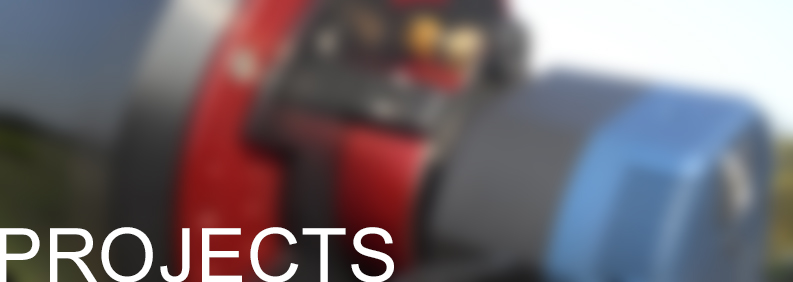Collimation

Takahashi 130F: Collimation Instructions
All related Takahashi instruments have been strictly collimated by auto-collimation device in the factory before shipment and packed in a triple-carton box to prevent the instrument from possible damage during transportation. However, if it should be mis-aligned by shocks and vibrations during the transportation / delivery process, the instrument can be re-collimated on your own if collimation instructions are provided.
Here is how to collimate the lenses (G1 and G2) of the Takahashi TOA130F apochromatic refractor. In most cases of decollimation, these lenses are related to each other. Therefore, you can collimate the refractor by adjusting these lenses.
1. Remove the dew shield. Using a 2.5mm Allen wrench, loosen the three lock screws and remove the dew shield from the ring. Refer to Fig. 1.
2. The binyl tape is applied in between the G1 and G2 cells. This is for keeping dust and moisture away. Remove this tape first. Refer to Fig. 2. In the diagram C-1, the A1 to A3 are the adjusting screws (with protruding heads) for the optical axis of the G1 and G2 and for connecting the G1 and G2 cells. The center screws with recessed head in the B positions are totally adjusting the objectives. The optical axis adjustment to be explained here is to adjust the distance of the G1 and G2 lenses, using the A1 to A3 screws.
3. When you like to check the collimation of the TOA130F, do it in a night with good seeing after it has been well equalized in the ambient temperature. If the star image has fine diffraction rings around the airy disc just like as shown in Fig. C-2 and C-3, the collimation would be perfect. If the image is seen like a comet with a tail as shown in Fig. C-5, the TOA30F is widely out of collimation.
4. In both cases like the one with minor de-collimation as in Fig. C-4 and with ambiguity as in Fig. C-3, re-collimation would be necessary. The A1 to A3 screws consist of the pull screw (A) at the center and the push screws (a) at the right and left of it. The push screws (a) are lightly glued before shipment out of the Takahashi factory. This is to ensure they are not loosened during transportation. Therefore, these screws can be turned by the Allen wrench as they are, but would be much easier to unscrew after resolving the glueing with some appropriate solvents. Please refer to Fig. C-8.
The following would be an explanation of how to proceed on with the collimation should the optical axis be widely out of collimation, as indicated in Fig. C-5.
First, make certain which direction the star image is shifting. In Fig. C-5, the core of the image is located at upper left and a tail is diverting lower right just like how a comet looks like. Next, measure with a venier callipers, the distance between the G1 and G2 cells and take this measurement down. This distance is optimized at the factory as standard for achieving the perfect adjustment for the optical axis and spherical aberration. If this distance should be made narrower by the optical axis adjustment, the spherical aberration is to be over-corrected and if the aberration is wide, it is to be under-corrected. See Fig. C-9 (by Ronchi test for the in-focus image). When the adjusting screws are moved in a one-way direction, the spherical aberration will vary. So, from time to time, if the distance remains the same or not, otherwise, use the opposite screws to adjust the distance back to the original position.
In the case where the core is located at the upper left as in Fig. C-5, you can adjust the distance a little wider. You can also collimate the optical axis by making the distance narrower using the adjusting screws (A2 and A3). If you like to make the distance wider, loosen the screw A and then tighten the screws (a) at the right and left of it. If you like the distance to be narrower, loosen the right and left screws (a) and tighten the screw, A.
At first, make the adjustment process in gradual amounts, making certain that the star image is monitored. During the process, the shifting direction can be changed. In such a case, use the other screws to collimate the optical axis. If you can see that the shifting amount reduces as shown in Fig. C-4, the job of collimation is going in the right direction.
Now, the adjustment will go delicate from here to Fig. C-3. The collimation will vary by slight touch on the adjusting screw A and a, thus you will need greater concentration. With some practice you will make the procedure easier.
Finally, please make sure that the diffraction rings at focus can be seen and the in-and-out of focus images are seen as perfectly concentric circles. Also, do make sure that the in-and-out of focus images are free from spherical aberration and that the in-and-out of focus imagery look the same as symmetrical images. Thereafter, seal the binyl tape at the original position to keep dust and moisture away. Now your collimation job is concluded.
As a cautionary note: Once collimation is done, tighten the screws firmly. If the three screws are insufficiently tightened, the G1 cell will move and the collimation will be undone. This will then make re-collimation difficult.